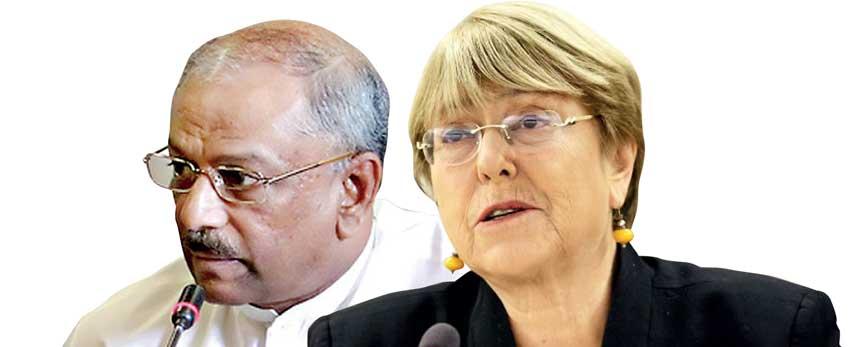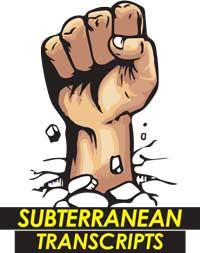Reply To:
Name - Reply Comment

 Does withdrawing from Resolution 30/1 demonstrate a rejection of human rights and accountability? Does it indicate total disregard for the UN, UNHRC, UN-member states and the international community?
Does withdrawing from Resolution 30/1 demonstrate a rejection of human rights and accountability? Does it indicate total disregard for the UN, UNHRC, UN-member states and the international community?
Not necessarily. It’s not as though the entities referred to above are error-free, without bias and impervious to machination, from within and without. Countries err, multilateral bodies err too. It can be cogently argued that Sri Lanka erred in 2015 regarding Resolution 30/1. It can also be argued that the UNHRC was ‘moved’ by powerful nations with agendas that had little to do with human rights and accountability, indeed countries that have routinely thumbed their metaphorical noses at such things for decades. As for ‘international community’ that’s a crude and much-abused term. We live in a one-country-one-vote international system but only in appearance. There’s a lot of behind-the-scenes arm-twisting, cajoling and even purchase.
Let’s return to the first question. The answer would be ‘yes’ only if one believed Resolution 30/1 to be a decent document that took into account ground realities, histories, political contexts, constitutional limitations and so on. Resolution 30/1 simply ignored all of that.

We are still left with the issues of human rights and accountability. These are perennial issues. They arise or rather they are breached and corrected in different contexts. They are there and therefore they can be violated. This is why we have to have rules and mechanisms, first to do our best to see these things are upheld and if not to, a) correct flaws that make for violation and b) hold those who violate accountable. We are not there yet, obviously, but there’s nothing to say that we cannot get there on our own. In any event, the do-gooders who want to ‘help’ really don’t have any credentials, do they now?
The UN High Commissioner for Human Rights, Michelle Bachelet has spoken of systemic barriers that impede real justice. She believes that ‘as a result’ victims remain denied justice. No justice system is perfect and ours has numerous flaws, agreed. However, it is also possible that Bachelet’s gripe has to do with an absolute misreading or misrepresentation of victim and aggressor, either deliberate or on account of rank ignorance. I suspect it’s a mix of both but heavy on the former.
The focus is on the so-called last days of the battle against terrorism. Some limit it to the final days before the LTTE’s military leadership was annihilated. Some talk of the first five months of 2009. That dating is wrong. It was a 30-year-long war. There was blood. There was death, dismemberment, destruction and displacement. In wars there is aggression. You don’t get passive wars, ever. There were terrible violations on the part of the Sri Lankan security forces, especially in the 1980s and 1990s, a period when politics was dominated by the United National Party (UNP) (especially under J.R. Jayewardena) and the People’s Alliance (when Chandrika Kumaratunga called the shots). If it’s about victims, accountability and compensation then all those affected during that time (including of course those who bore the brunt of terrorism) would have to be considered.
But no, we are told it’s about ‘the last days of the war.’ So let’s go there.
Here’s the scenario. The world’s second most brutal terrorist organisation (No. 1 would be the US military) fleeing the advancing Sri Lankan security forces corralled hundreds of thousands of people (Tamil civilians), forcing them to retreat along with combatants. That was the infamous human shield. In fact they were held hostage by the LTTE.
Now the LTTE had for years pilfered food and medicine sent to people living in the conflict zones. Sacks of grain were used to line bunkers. Equipment transported to LTTE held areas during the infamous ‘Ceasefire Agreement’ between Ranil Wickremesinghe and Velupillai Prabhakaran, ostensibly to help restore normalcy, was seized and deployed for military purposes. For decades the LTTE abducted children, gave them military training and sent them to battle. During this time, the LTTE set up and operated a lucrative international network that engaged in drug-running, arms-smuggling, people-trafficking, extortion and all manner of crimes.
Last days. The hostages wanted to leave, but the LTTE did not let them. In one gory incident the LTTE herded wounded female LTTE cadres into two buses and blew them up. The logic? They were a liability — if they were allowed to leave the No Fire Zone and into areas cleared by the Sri Lankan security forces, there was a risk of vital information passing into the hands of ‘the enemy’ and if they remained, they would constitute an additional burden in already trying circumstances. To discourage those who wanted to leave, the LTTE fired at fleeing hostages. In order to dissuade the security forces the LTTE sent to a ‘receiving point’ a kid, strapped with a backpack full of explosives which were duly detonated.
So we had victims. They were victimised for years by the LTTE and in particularly pernicious ways during ‘the last days.’ They were each given one glass of rice gruel a day. That’s it. If the security forces did not move in, they would have perished of hunger. The security forces did move in. People did die. They were victims of a war that the LTTE called for. Remember that all attempts at negotiated settlements from the eighties onwards (Thimpu, 1985) were scuttled by the LTTE. One time LTTE international spokesperson Lawrence Thilakar famously said ‘we view all initiatives at negotiated settlements such as ceasefires and peace talks through a military lens.’ The LTTE without doubt was the main aggressor here. They created a situation that made a bloodless freezing of hostages untenable.
And it is not the case that the only victims are those held hostage by the LTTE and who died in that massive hostage rescue operation. Every single citizen of Sri Lanka was a victim of LTTE terrorism. There were people who died in suicide attacks, there were villagers hacked to death, rival political organisations decimated, heads of state assassinated, children abducted and countless acts that wrecked the economy and further burdened the population. How about some human rights narrative about all that? How about accountability? How about talking about all victims and not only those whose victim-hood was a consequent to LTTE aggression and its ending the result of military action to which there was no other alternative?
Victim. Victim hood. Aggressor. Aggression. Talk about these things selectively, leave out certain key elements of the story and ignore the main perpetrator and yes, you will get a skewed picture. Gaze long enough at that visual and all of a sudden you are talking about systems that are flawed. And you worry over past patterns of human rights violations recurring.
The interesting thing is this part narrative also increases the risk of recurrence. That’s how it is. And that’s why this lament over withdrawing from Resolution 30/1 is silly if not obnoxious.
[email protected].
www.malindawords.blogspot.com.